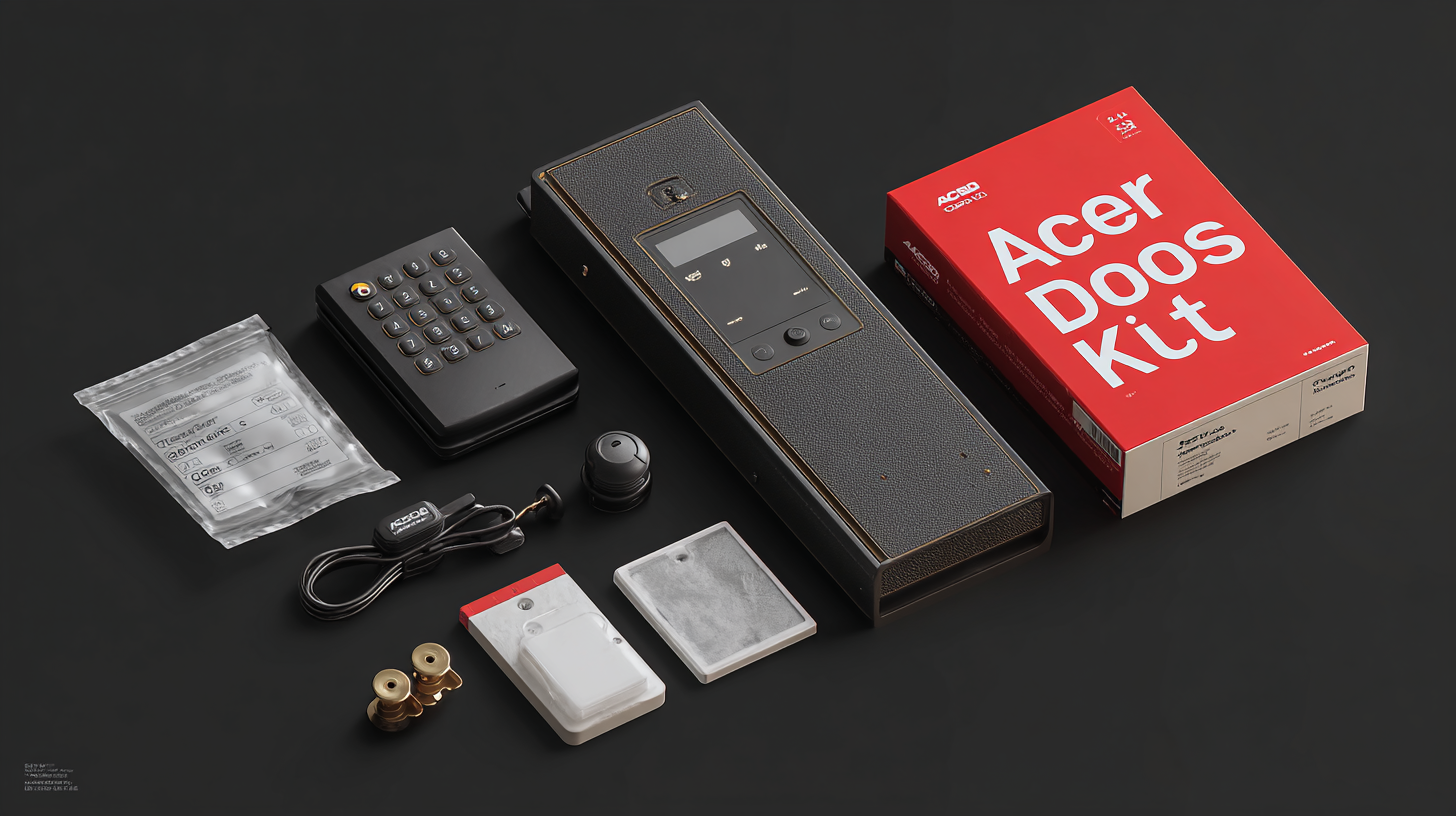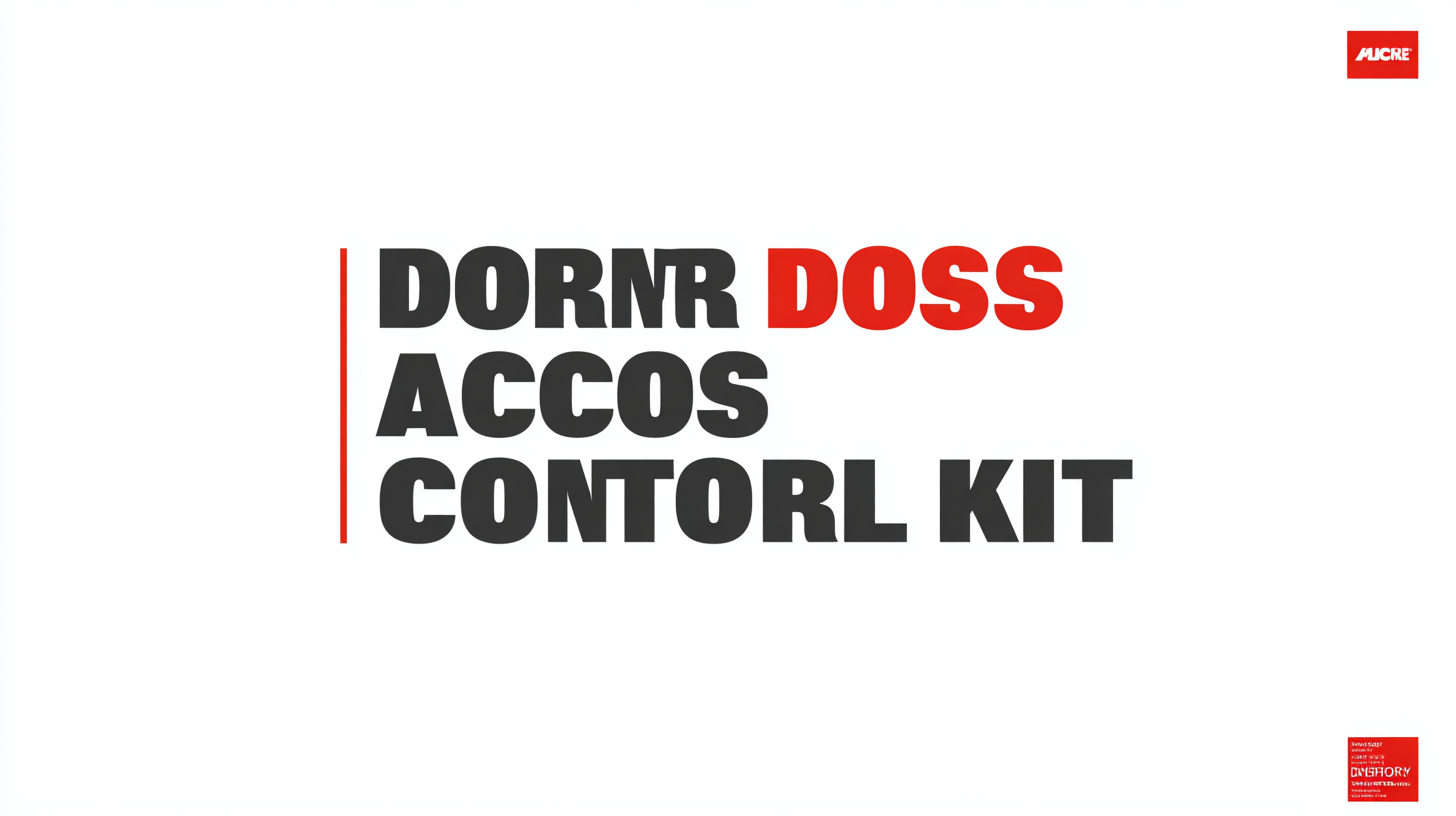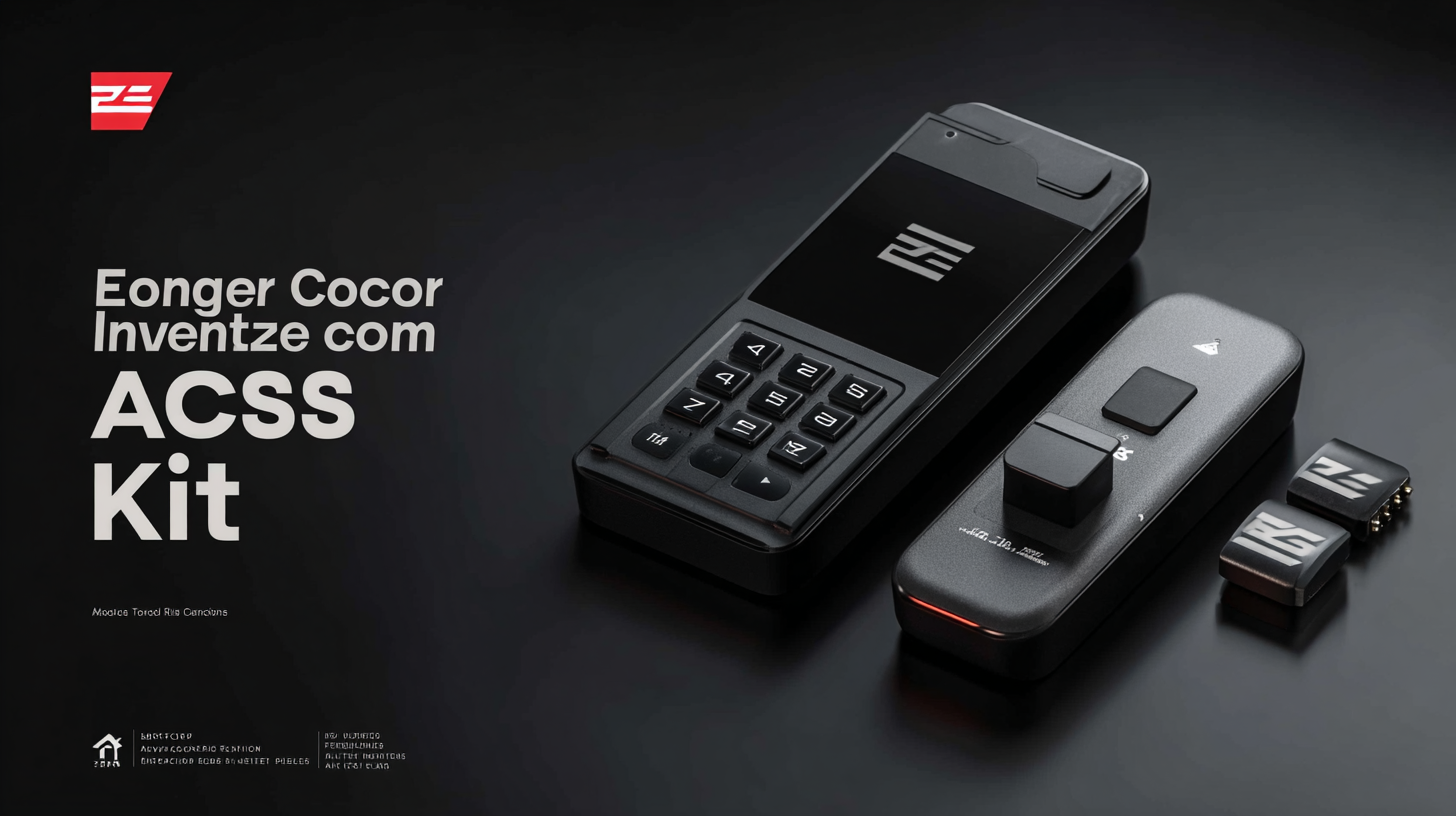Emerging Technologies for 2025 Evaluating Alternatives to the Best Door Access Control Kit
As we move closer to 2025, the landscape of security technologies is rapidly evolving, with door access control kits at the forefront of this transformation. According to a report by MarketsandMarkets, the global market for electronic access control systems is projected to reach $12.13 billion by 2025, driven by growing concerns over security and the increasing adoption of smart technologies. This trend highlights the urgency for businesses and organizations to evaluate alternatives to their current door access control kits, ensuring they implement the most effective and innovative solutions available.

With advancements in biometric technologies, mobile access solutions, and cloud-based systems, it becomes imperative to explore various options that not only enhance security but also improve user convenience and operational efficiency. This blog will delve into emerging technologies and evaluate the best alternatives to traditional door access control kits, equipping readers with the knowledge needed to make informed decisions in this evolving field.
Overview of Modern Door Access Control Technologies
As we observe the advancement of modern door access control technologies, several emerging trends indicate a shift towards integration with artificial intelligence (AI) and the Internet of Things (IoT). The surge in connected devices that generate vast amounts of data has changed the landscape of access control systems. These systems now not only focus on security but also on real-time data processing and understanding, providing enhanced monitoring and quicker responses to potential security breaches.
Furthermore, innovations such as 3D stacked DRAM technology are paving the way for smarter access control solutions. The combination of high bandwidth and efficient data processing capabilities allows for improved communication between devices, which can bolster the effectiveness of access control measures. With the introduction of advanced interfaces and integration capabilities, the market is poised for a transformation that emphasizes not just traditional locks and keys, but intelligent systems that communicate seamlessly with other security measures, creating a more holistic approach to building safety and user accessibility in 2025.
Key Features to Consider in Door Access Control Kits
 When evaluating door access control kits, several key features are essential to ensure optimal security and efficiency. One major consideration is the
scalability of the system. According to a report by MarketsandMarkets, the global access control market is projected to reach USD 18.8 billion by 2025, highlighting the increasing need for systems that can grow with an organization’s needs. Look for kits that not only manage access today but can easily integrate additional components,
such as biometric readers or cloud-based management tools, in the future.
When evaluating door access control kits, several key features are essential to ensure optimal security and efficiency. One major consideration is the
scalability of the system. According to a report by MarketsandMarkets, the global access control market is projected to reach USD 18.8 billion by 2025, highlighting the increasing need for systems that can grow with an organization’s needs. Look for kits that not only manage access today but can easily integrate additional components,
such as biometric readers or cloud-based management tools, in the future.
Another critical feature is the user interface. Systems with intuitive and user-friendly interfaces result in quicker onboarding for security personnel and minimized operational errors. A study by ResearchAndMarkets indicates that user-friendly access control solutions are increasingly preferred in corporate environments, contributing to a boost in overall productivity. Opt for kits with mobile app capabilities, allowing remote access management and real-time notifications.
Tip: Always consider the compatibility of the access control kit with your current security infrastructure to streamline integration. Additionally, check for ongoing support and firmware updates from the manufacturer to ensure your system remains secure against new threats.
Comparative Analysis of Biometric vs. Keycard Systems
Biometric systems and keycard access controls have distinct advantages and drawbacks, particularly as we approach 2025 and technology continues to evolve. Biometric solutions, such as palm vein recognition and facial recognition, are gaining traction in the security and payment sectors. Recent developments show that companies are exploring advanced biometric payment card systems, which not only enhance security but also improve user convenience. According to industry reports, demand for biometric identification technologies is rapidly expanding, with enterprises, governments, and military entities being the primary consumers, comprising 71% of the market share.
As organizations consider transitioning to biometric systems, it's essential to weigh their benefits against established keycard systems. Keycard systems typically offer lower initial costs and ease of implementation, making them suitable for many businesses. However, they can be vulnerable to theft or cloning. In contrast, biometric systems, while potentially higher in upfront investment, provide robust security features that can deter unauthorized access effectively.
Cost-Benefit Evaluation of Smart Access Solutions
As organizations increasingly prioritize security and efficiency, the cost-benefit evaluation of smart access solutions becomes critical in selecting the optimal door access control kit. According to a recent report by Research and Markets, the global smart access control market is projected to grow from $8.1 billion in 2020 to $19.2 billion by 2025, showcasing a compound annual growth rate (CAGR) of 18.9%. This rapid expansion signifies the urgent need for companies to assess various alternatives, especially when traditional systems fall short in terms of responsiveness and adaptability.
Moreover, a study by IHS Markit indicates that implementing smart access solutions can lead to an average reduction of 25% in security incidents and a 30% decrease in operational costs over three years. By leveraging advancements like IoT integration, biometric authentication, and mobile credentials, businesses not only enhance security but also streamline their access management processes. Consequently, organizations must carefully evaluate the total cost of ownership of various systems, including installation, maintenance, and the potential for scaling, to ensure they select a solution that aligns both with their budget constraints and security requirements.

Future Trends in Door Access Control Technologies for 2025
As we look toward 2025, the landscape of door access control technologies is poised for significant transformation. Emerging trends indicate a shift towards integrating artificial intelligence and machine learning within access systems. According to a report by MarketsandMarkets, the global market for door access control systems is expected to grow from $8.44 billion in 2020 to $14.08 billion by 2025, with a compound annual growth rate (CAGR) of 11.1%. This growth will be driven by advancements in biometric verification methods and mobile access technologies, which not only enhance security but also improve user experience.
Additionally, the adoption of cloud-based access control solutions is on the rise, providing businesses with greater flexibility and scalability. A recent study by IHS Markit highlights that the percentage of cloud-based access control systems is forecasted to reach over 30% by 2025. This shift enables organizations to manage access remotely, streamline operations, and reduce costs associated with traditional hardware-based systems. As these technologies evolve, stakeholders in security and facility management must evaluate and adapt to these innovations to remain competitive in a rapidly changing environment.
Emerging Technologies for 2025 Evaluating Alternatives to the Best Door Access Control Kit - Future Trends in Door Access Control Technologies for 2025
| Technology Type | Description | Advantages | Challenges | Expected Adoption Rate by 2025 |
|---|---|---|---|---|
| Biometric Authentication | Utilizes unique biological traits for access control. | High security, reduced risk of unauthorized access. | Costly implementation and privacy concerns. | 65% |
| Mobile Access Control | Access granted via smartphones and mobile devices. | Convenience, integration with other smart apps. | Dependence on mobile technology and battery life. | 50% |
| Cloud-Based Access Control | Access control managed through cloud technology. | Scalability, remote management capabilities. | Security risks and reliance on internet connectivity. | 55% |
| Smart Locks | Locks that can be controlled remotely via apps. | Easy key management, remote access capabilities. | Potential vulnerabilities to hacking. | 70% |
| Integrative Systems | Systems that integrate access control with other security measures. | Comprehensive security strategy, improved user tracking. | Higher complexity and coordination required. | 40% |
- • HighpowerOne Touchscreen Controller • HighpowerOne Mobile Credential App
- Highpower Management System
- • Pushplate 100 PNZ
- • Pushplate 110 PNZ
- • Pushplate 120/140 PNZ
- • Pushplate 130/150 PNZ
- • Pushplate 200 PNZ
- • Pushplate 100
- • Pushplate 110
- • Pushplate 120/140
- • Pushplate 130/150
- • Pushplate 200
Mechanical Timers
Proximity ID Access Cards and Fobs
Proximity Card Readers
- • Proximity Reader P-300
- • Proximity Reader P-400
- • Proximity Reader P-500
- • Proximity Reader P-620
- • Proximity Reader P-640
- • Proximity Reader P-710
- • Proximity Reader P-900
- • Ranger Proximity Readers
- • Ranger Controls
- • Sure-Fi Wireless Interfaces
Smart Series JX Readers
Electromagnetic Locks
Highpower Power Supplies
• H505
• H512
Security Products Summary
